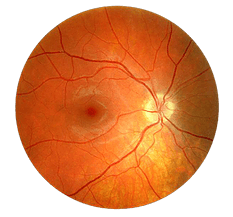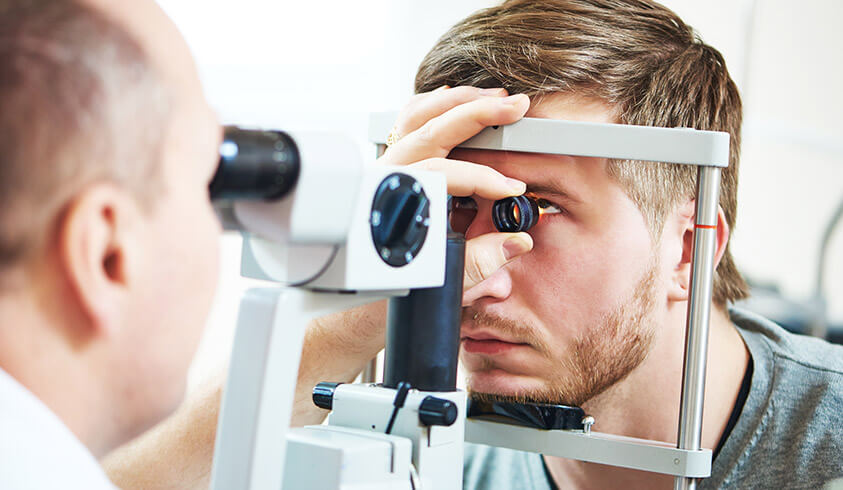There is a little truth in every rumor. When the first reports of blurred and reduced vision appeared, many men, who were taking Viagra, had been concerned. After that, there were many denials based on the clinical trials from the Viagra maker American Company. But, after more than 10 year, the Web is still chewing the cud and offering new stories about how Viagra can cause blindness. Feeling responsibility to people using the services of Canadian pharmacies, we have decided to reconsider the history of relationships between Viagra and human vision.
Viagra and Eyesight problems: Premarketing Trials
Viagra (sildenafil) was approved by FDA in March 1998. During premarketing clinical trials were reported vision changes, such as blurred vision, increased sensitivity to light and changes in color discrimination (often, “bluish vision”), that were listed as possible side effects of Viagra. 3% of men taking 25-50 mg doses of Viagra experienced those effects, whilst increasing the dose increased the percentage accordingly. This effect was based on the inhibiting effect of Viaga on PDE6, an enzyme present in retinal photoreceptors. Vision changes were temporary and passed in a term from 2 hours to 2 days.
Post-marketing Studies
Nevertheless, some men were concerned with possibility of vision damage. It was thought that Viagra, due to its ability to low arterial pressure, could reduce blood flow to the optic nerves, which can lead to nerve damage.
In 2002, scientists of the Stanford University undertook research in 13 men who took high doses of Viagra; it was found that Viagra does not affect blood flow. Some variations in the thickness of the choroid layer may give a reason to believe that sildenafil can cause vision changes in men with accompanying eye conditions. The results of the studies were published in Ophthalmologica journal.
Year 2005: 14 men are reported the victims of Viagra
The sensation was done by ophthalmologists of the University of Minnesota, when in the March 2005 they published their findings. According to the University of Minnesota, 14 men had got partial vision impairment in 36 hours after taking the ED drug. All of them were in age over 50 and supposed to have NAION (Non-Arteritic Anterior Ischemic Optic Neuropathy). It was thought that Viagra could cause constriction of the eye blood vessels.
What is NAION?
 NAION is also called “eye stroke”. It is a collapse of the optic nerve due to insufficient blood supply. The condition is often presented in men older than 50 who have such comorbidities as hypertension, heart diseases and diabetes. Other eyesight problems as macular degeneration, retinitis and pigmentosa can increase the risk of NAION.
NAION is also called “eye stroke”. It is a collapse of the optic nerve due to insufficient blood supply. The condition is often presented in men older than 50 who have such comorbidities as hypertension, heart diseases and diabetes. Other eyesight problems as macular degeneration, retinitis and pigmentosa can increase the risk of NAION.
Normally, NAION occurs in one eye, but, sometimes, it can affect both eyes. We could not provide you with worldwide statistics, but, in the U.S. only, about 10.000 people a year experience sudden vision loss caused by NAION. And most of that people have the same age and health condition indicators, as those who suffer from erectile dysfunction. Mostly, NAION does not lead to permanent and total vision failure and eyesight restores in a period up to two weeks, but, in rare cases, irreversible loss of vision can happen.
FDA Investigates the Case
Based on the cases claimed by the University of Minnesota, the Food and Drug Administration started an investigation in May 2005. In July 2005, the FDA had 43 reports of partial vision loss in those men who used ED drugs, including Viagra – 38 cases, Cialis – 4 and Levitra – 1. The representatives of the FDA made a statement in which they urged men to stop using Viagra and check with their doctors for related eye conditions. Pfizer was advised to include a warning about possible vision loss into the prescribing information and to conduct more studies on Viagra effect on eyesight.
The first one was done and everyone can find the warning, when reading the drug description. It is also mentioned that Viagra may cause Non-Arteritic Anterior Ischemic Optic Neuropathy in “2.5–11.8 cases per 100,000” in men after 50, that is hardly impressive comparing to 10.000 people suffering from the disease annually. But, finally, it was not possible to determine a direct connection between the cases of vision impairment and Viagra intake. The only argument of the University of Minnesota was that all the cases they claimed happened shortly after Viagra use.
As to the further studies, when in 2010 the FDA held a repeated audit of Viagra’s side effects, there was a record that Pfizer “had failed to report” on the impact of Viagra intake on eyesight timely. The creators of Viagra sent auditors back to previous, more than 100 clinical studies that did not show any evidence of Viagra harmful effect on vision, apart from already mentioned temporary side effects causing in some men taking Viagra (2-10 of 100.000) blurred and bluish vision for a few hours.
That must be the end of the story of vision loss due to Viagra, as nobody was able to provide scientific evidence, why you can have permanent eyesight problems caused by sildenafil. But, surprisingly, the myth has been survived till the present time. It seems, as fear is bigger than sense. That is why we have tried to do our best and find any possible reports on further studies of influence of sildenafil to eyesight.
Viagra and Eyesight: The Latest Studies
Though studying Viagra is a good occasion to become famous, taking onto consideration the popularity of the drug, there were no many specific studies related to the vision problems.
People Carrying Certain Genes Are More Prone to Eyesight Problems
Researchers from the University of New South Wales, Australia have proved in experiments on mice that carrier of one gene linked to the rare hereditary disease retinitis pigmentosa can have the higher risk of permanent vision damage. When a healthy mouse, given a high dose of sildenafil, experienced vision problems for about 2 days, a mouse with a mutant gene had problems for around 2 weeks. That could be a proof that people carrying the genes of retinitis pigmentosa are in a higher risk. A report on the studies was published in the journal Experimental Eye Research in 2014.
Duke Eye Centre: Can Viagra Reduce AMD?

In 2013, ophthalmologists from the Duke Eye Centre undertook a study of sildenafil to investigate whether it can help to improve condition called age related macular degeneration (AMD). The assumption was based on the possible ability of sildenafil to thicken the choroid layer, as it was noticed as far back as in 2002 in the Stanford University study (see above). Although, on the first stage, there were some optimistic expectations, then, the study was terminated in 2015 “due to inadequate support to complete recruitment/data analysis”. Finally, the research of the Scheie Eye Institute, which proved in double-blinded, randomized, placebo-controlled, crossover study that sildenafil does not cause any significant change in the choroidal thickness, has remained unbeaten.
Viagra and Eyesight Problem: Much Ado About Nothing
If we wanted to present you ultimate 100% proof that Viagra never could cause your eyesight, we were failed, as there is no any paper, scientific or not, where you can clearly read “Viagra medicine 100% safe and has no side effects”. But, indeed, we did not pursue that purpose. All that we wanted is to discover, whether there is any real base, besides a thirst for sensation, under those more than 10 years old rumors that “Viagra can cause you blindness” (that was how it sounded). But we were also failed, as there is no any study confirming that Viagra ruins your eyesight. As it was said in a brief of Scheie Eye Institute published on PubMed.gov in 2002 when the first cases of vision problems supposedly related to Viagra had appeared, “no consistent pattern has emerged to suggest any long-term effect of sildenafil on the retina or other structures of the eye”.
At the moment of the hot discussions of the year 2005, there were claimed that more than 23 million men were using Viagra. Currently, it is quite difficult to calculate the exact number, as the Viagra (sildenafil) market is no more under centralized control and generic sildenafil is sold from many sources worldwide, including Canadian pharmacies, online shops in Europe and Asia, but according to rough estimation, there are about 100 million users of Viagra worldwide – and most of them are satisfied. On the other side, we have at stake those 50 cases of vision impairment that were chosen to create the case in Media. It seems like pure inflation of insignificant matter. Surprisingly, but there were no other known reports after 2005. Even the omnipotent FDA has failed to find more.
Probably, it is time to forget about the old rumors that have busted without having more fuel. Viagra is a safe and effective drug if used wisely. In case you are suspicious of having some health issues mentioned in relation with vision problems, you should consult with your doctor, but if you are not in the high risk category, have good overall health and avoid overdoses, you should not have much concern. Honestly, using a computer can impair your vision much more than Viagra, but nobody claims this to IBM.








